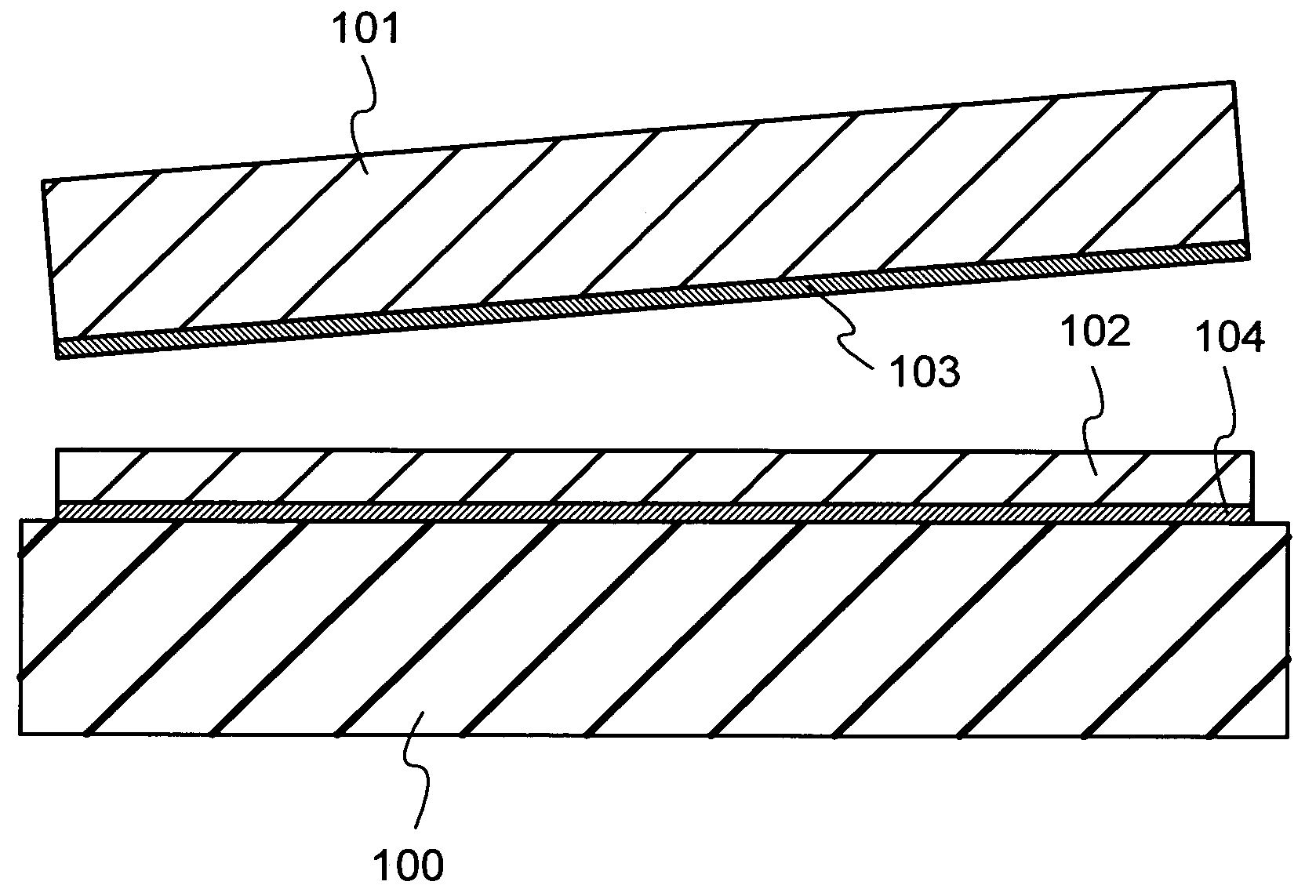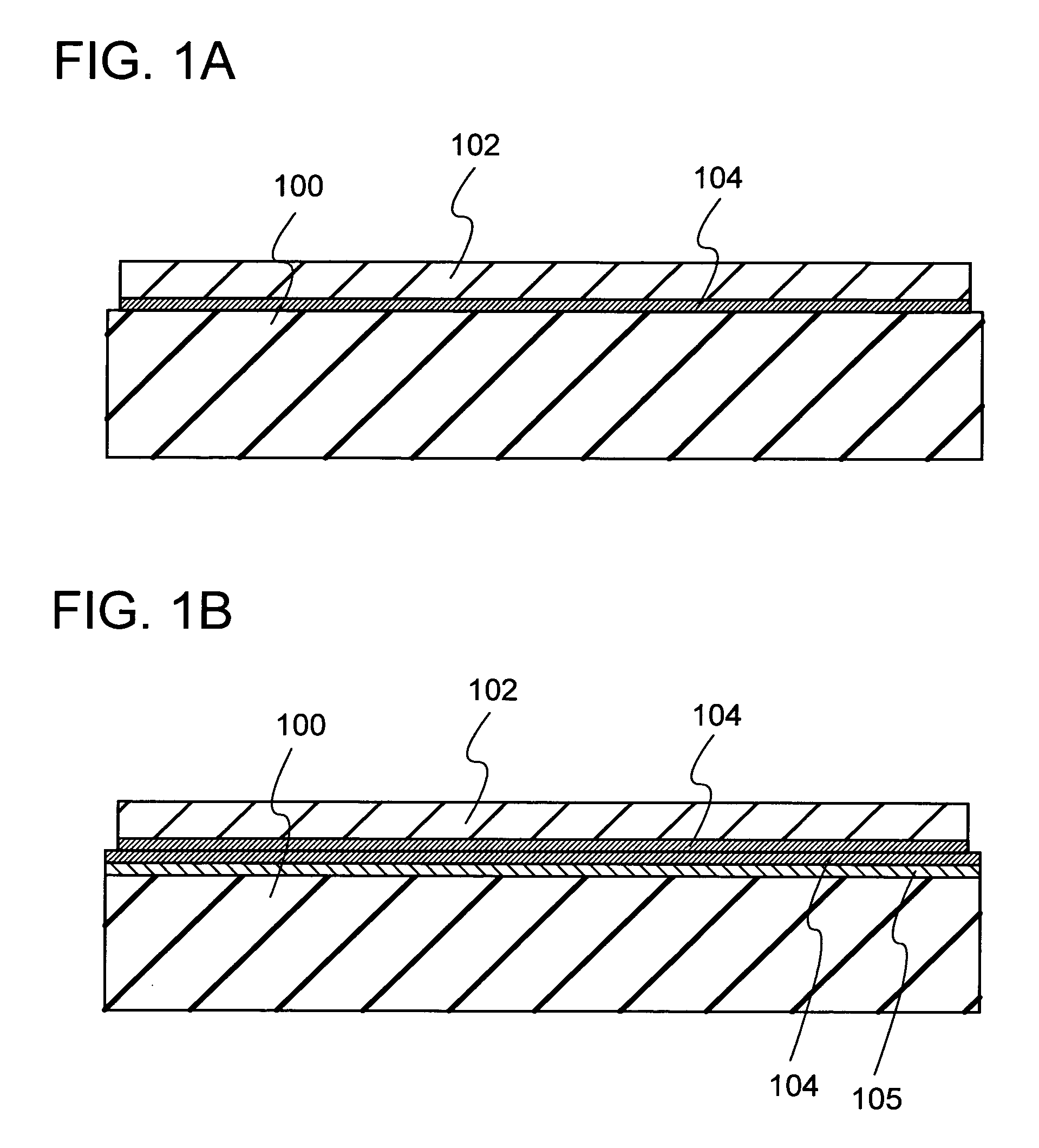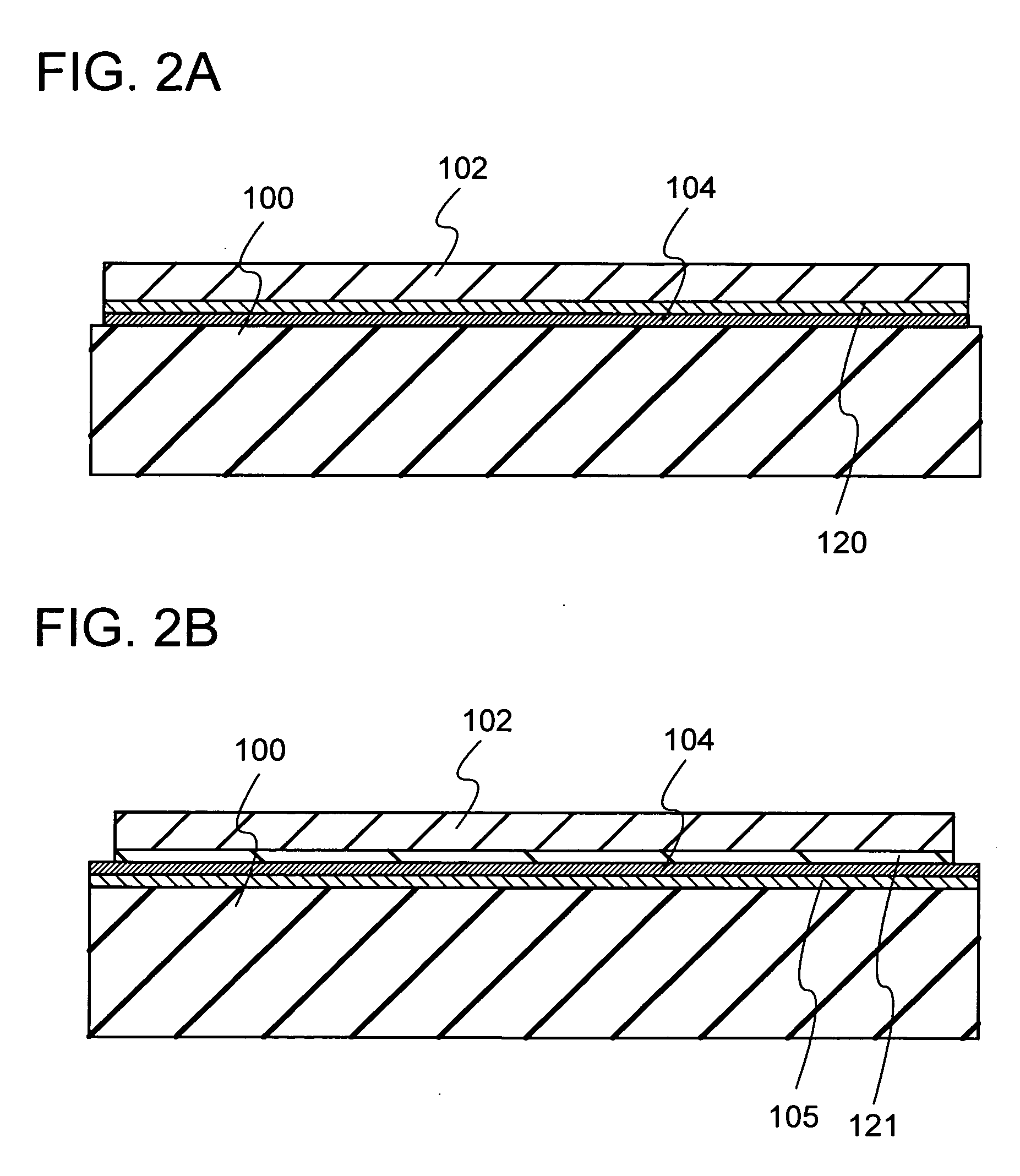Method for manufacturing semiconductor substrate
a manufacturing method and semiconductor technology, applied in semiconductor/solid-state device manufacturing, basic electric elements, electric devices, etc., can solve the problem of difficult to obtain a silicon layer with a desired thickness, and achieve the effects of high bond strength, reduced ion irradiation depth, and high planarity
- Summary
- Abstract
- Description
- Claims
- Application Information
AI Technical Summary
Benefits of technology
Problems solved by technology
Method used
Image
Examples
embodiment mode 1
[0030]Each of FIGS. 1A and 1B shows a semiconductor substrate formed according to the present invention. In FIG. 1A, a base substrate 100 is a substrate having an insulating surface or an insulating substrate, and any of a variety of glass substrates that are used in the electronics industry, such as aluminosilicate glass substrates, aluminoborosilicate glass substrates, and barium borosilicate glass substrates, can be used. Alternatively, a quartz glass substrate or a semiconductor substrate such as a silicon wafer can be used. A single crystal semiconductor layer 102 is formed from a single crystal semiconductor, and single crystal silicon is typically used. Alternatively, a crystalline semiconductor layer formed from silicon, germanium, or a compound semiconductor such as gallium arsenide or indium phosphide which can be separated from a single crystal semiconductor substrate or a polycrystalline semiconductor substrate by a hydrogen ion implantation separation method, for exampl...
embodiment mode 2
[0041]This embodiment mode describes a method for manufacturing a semiconductor substrate described in Embodiment Mode 1 with reference to FIGS. 3A to 3C and FIG. 4.
[0042]A semiconductor substrate 101 shown in FIG. 3A is cleaned, and the semiconductor substrate 101 is irradiated with ions having equal mass that are accelerated by an electric field from a surface thereof to form an embrittlement layer 103 in the semiconductor substrate 101 at a predetermined depth. In this embodiment mode, ions of a halogen atom (also referred to as halogen ions) which had been subjected to mass separation are used. The halogen ions which had been subjected to mass separation are obtained by subjecting the material (mainly gas) including a halogen atom to mass separation. The ion irradiation is carried out in consideration of the thickness of a single crystal semiconductor layer that is to be transferred to the base substrate. A thickness of the single crystal semiconductor layer is set to be 5 to 50...
embodiment mode 3
[0055]This embodiment mode describes another mode of a method for manufacturing a semiconductor substrate which is described in Embodiment Mode 2.
[0056]In this embodiment mode, a semiconductor substrate 101 is irradiated with inert gas ions that are accelerated by an electric field instead of the halogen ions in Embodiment Mode 2, from a surface of the semiconductor substrate 101 as shown in FIG. 3A to form an embrittlement layer 103 in the semiconductor substrate 101 at a predetermined depth. It is to be noted that the inert gas ions are obtained by using a gas including an inert atom, and are referred to as inert ions or inert atom ions. The ion irradiation is carried out in consideration of the thickness of an LTSS layer that is to be transferred to a base substrate. A thickness of the LTSS layer is set to be 5 to 500 nm, preferably 10 to 200 nm. An accelerating voltage in irradiating the semiconductor substrate 101 with inert gas ions is set in consideration of such a thickness....
PUM
 Login to View More
Login to View More Abstract
Description
Claims
Application Information
 Login to View More
Login to View More - R&D
- Intellectual Property
- Life Sciences
- Materials
- Tech Scout
- Unparalleled Data Quality
- Higher Quality Content
- 60% Fewer Hallucinations
Browse by: Latest US Patents, China's latest patents, Technical Efficacy Thesaurus, Application Domain, Technology Topic, Popular Technical Reports.
© 2025 PatSnap. All rights reserved.Legal|Privacy policy|Modern Slavery Act Transparency Statement|Sitemap|About US| Contact US: help@patsnap.com



